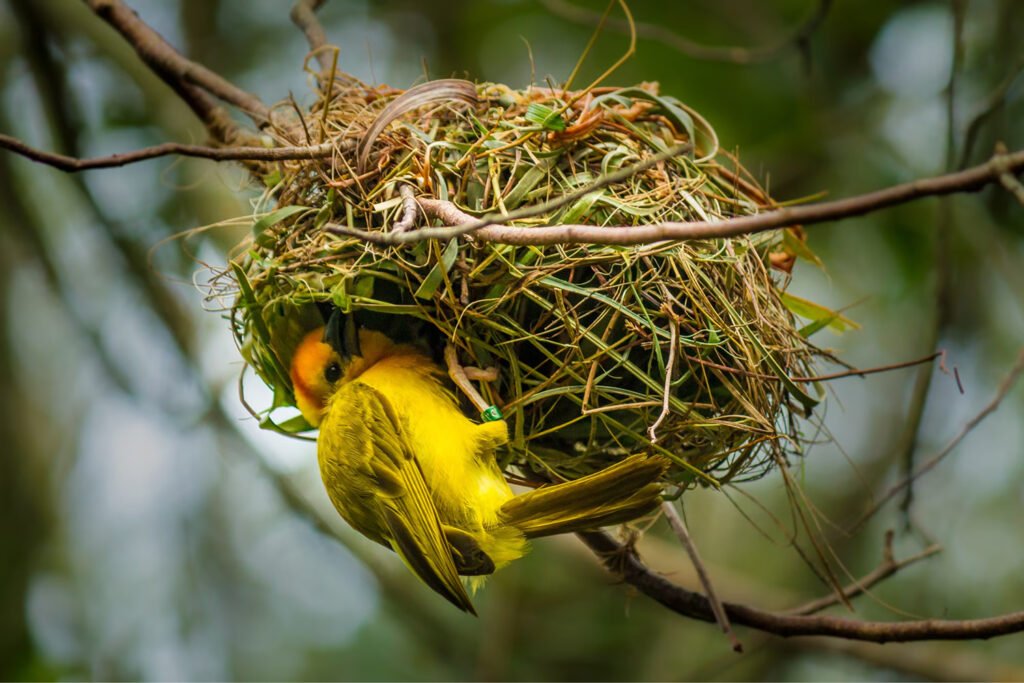Are all bird nests really created equal? Birds exhibit some of the most fascinating and diverse nesting strategies in the natural world. Whether it’s using saliva to craft nests or building elaborate communal structures, these avian architects push boundaries and challenge our understanding of nesting behavior. This article explores the intriguing world of birds with unusual nesting habits, examining the unique materials and strategies they employ. From edible-nest swiftlets to sociable weavers, delve into the creativity of these creatures and uncover the ecological significance of their nesting choices. Explore the marvels of avian ingenuity and adaptation.
Birds That Nest in Unusual Places
Birds often exhibit intriguing nesting habits, choosing sites that may seem unconventional to us. These unusual breeding sites range from urban settings to unexpected natural structures. Such behaviors highlight the adaptability of birds in utilizing available resources to enhance survival and reproductive success.
Wrens are particularly known for their unpredictable nesting choices. They have been observed nesting in old shoes and cow skulls, demonstrating their flexibility in selecting nesting sites. Robins and swallows also display this adaptability, with robins choosing rain gutters as nesting spots and swallows relocating their nests from a moving tractor trailer to a stationary storage truck. These choices, though unusual, allow birds to exploit available niches in their environment.
House finches have been noted for their persistence in nesting attempts, even opting for high-traffic areas like bank night deposit boxes. Despite the constant disturbances, these finches demonstrate remarkable tenacity in their efforts to secure a nesting site. Such behaviors underscore the birds’ ability to adapt to human-altered environments, often taking advantage of the structures and opportunities presented by urban areas.
The adaptability and resilience exhibited by birds nesting in unconventional places offer several ecological advantages. These strategies can reduce competition for traditional nesting sites and sometimes provide additional protection from predators. Moreover, leveraging urban environments enables birds to thrive amidst human development, ensuring their continued presence and contribution to biodiversity. Through their resourceful nesting habits, birds not only secure their own survival but also enrich the ecosystems they inhabit.
Ecological and Evolutionary Advantages of Unusual Nesting
Unusual nesting strategies provide significant ecological benefits by reducing predation risks and enhancing thermal regulation. Birds like the sociable weaver, which builds communal nests, benefit from collective defense mechanisms. These expansive structures not only deter predators by sheer size and complexity but also offer a stable microclimate, buffering temperature extremes in harsh environments. Similarly, the malleefowl’s use of compost mounds for incubation leverages natural heat from decomposing vegetation, ensuring optimal egg development without constant parental warmth. These strategies illustrate how birds adapt their nesting habits to exploit environmental conditions, ensuring greater protection and survival for their offspring.
From an evolutionary perspective, these nesting adaptations improve survival rates and reproductive success. Birds that ingeniously use available materials, such as the tailorbird stitching leaves with cobwebs, create camouflaged nests that are less detectable to predators. This reduces the likelihood of nest predation, allowing more chicks to reach maturity. Additionally, the adaptability of species like the black kite, incorporating urban materials into their nests, highlights evolutionary resilience in changing habitats. These behaviors not only enhance individual reproductive success but also contribute to the long-term viability of species, supporting their continued presence and evolution in diverse ecosystems.
Final Words
Exploring the fascinating world of birds with unusual nesting habits reveals a dazzling array of strategies and adaptations. From the saliva-crafted nests of the edible-nest swiftlet to the communal structures of sociable weavers, these behaviors highlight remarkable diversity and innovation.
Birds nesting in unexpected places like old shoes or urban settings demonstrate extraordinary adaptability. The diverse materials used in nest building showcase the ingenuity birds demonstrate in utilizing their environment.
Recognizing these incredible nesting behaviors reinforces the importance of preserving habitats. Promoting awareness and appreciation for such strategies encourages conservation and supports birds’ ecological and evolutionary success.
FAQ
What bird is known for building complex nests?
The sociable weaver is known for constructing complex communal nests. These structures can house hundreds of birds and are highly durable, demonstrating advanced social nesting behavior.
Which bird makes a beautiful nest?
The baya weaver creates intricate hanging nests woven from grass. These nests are not only functional but also aesthetically pleasing, showcasing the bird’s remarkable weaving skills.
What bird uses saliva to build nests?
The edible-nest swiftlet constructs nests using its saliva. These nests, found in caves, are notable for being not only unique but also a delicacy in certain cuisines.
How can I identify the type of bird nest I have?
Identifying a bird nest involves examining its size, location, and materials. For example, tailorbirds use stitched leaves, while black kites may incorporate plastics.
What birds are known for nesting in unusual places?
Wrens, robins, and house finches are known for nesting in unconventional sites such as old shoes, rain gutters, and even bank deposit boxes, demonstrating adaptability.
Which bird makes the messiest nests?
Bowerbirds are known for their creative yet messy nest constructions. They incorporate various items to attract mates, often leading to cluttered but elaborate structures.
Why do some birds choose urban areas for nesting?
Birds like the common raven adapt to urban areas due to food availability and fewer natural predators, demonstrating flexibility and resilience in changing habitats.


